The MITHRA Project

Laurent Bricault in his apartment in Toulouse.
Andreu Abuín
A PhD in Egyptology, Laurent Bricault is a professor of Roman history at the Jean-Jaurès University in Toulouse.
Since the beginning of his academic career, this leading figure of leonine character in the best sense of the word has never ceased to accumulate knowledge and recognition. He is a member of the prestigious Institut Universitaire de France and a guest scholar at the Getty Villa in Los Angeles.
Since 1999, he has worked with the renowned Brill publishing house to organise international colloquia on isiac studies. Together with Richard Veymiers, director of the Royal Museum of Mariemont in Belgium, he runs the Bibliotheca Isiaca. He is also one of the collaborators of the international programme of Roman Provincial Coinage.
In parallel, he has co-directed the MITHRA Project with Richard Veymiers and Nicolas Amoroso from 2018 to 2023. Laurent Bricault himself admits that he came to this field by chance. It was thanks to one of his doctoral students, Philippe Roy, that he began to take an interest in Mithras. Together they published Les cultes de Mithra dans l’empire Romain in 2021, an indispensable survey of archaeological sources that overturned much of what we thought we knew about the sun god.
In truth, Laurent Bricault’s Mithras has very little to do with the secret, mysterious god of Eastern origin to which we are accustomed from twentieth-century authors, let alone those of the nineteenth century.
Who do you think Mithras is?
Who is Mithras... That’s a trick question. It’s a complicated question. Which Mithras are we talking about? The Mithras I’ve studied have very little to do with Indian Mithras or Persian Mithras.
For me—and I mean for me—to ask about Mithras in the Roman Empire is to ask about what Claude Lévi-Strauss has called a bricolage. This took shape in the late 60s of the first century AD, when one or more people shaped the Roman cult of Mithras. But I can’t say who. And I don’t think I’ll be able to say who for the rest of my life, unfortunately.
But you must have your suspicions…
Once again, it’s a delicate area, difficult to research. All hypotheses are possible. I know them all. It’s almost a game between historians of religion. I could think of ten others that would certainly be just as convincing, but just as gratuitous, or almost so. And that’s not what interests me.
To be honest, I don’t know who these people are. But the result is there. One or more people, perhaps in Rome, are going to found, initiate, if I dare use that word, the cult of Mithras. They were not the only ones to create new cults in this period of profound intellectual upheaval. Compared to other attempts, this one would be successful. Much like the cult of a certain Chrestos, which also enjoyed some success despite its complicated beginnings.
These were certainly highly educated people. They cobbled together, composed and assemble a number of composite elements into a very coherent whole, both in terms of history and image, and in terms of lexicon and rite. What I find extremely successful is their ability to consciously structure something that is fundamentally Roman. Compared to many other cults, it was perhaps the most Roman of the period. I’m exaggerating a bit, but not that much.
And they wanted to give this cult a kind of varnish, a film, a foreign coating, with a touch of exoticism, both visually, lexically and intellectually, which was bound to attract. I think this happened just as Corbulo ’s troops were returning from Armenia.
Many scholarly and often brilliant hypotheses have been put forward over the decades to identify these ‘inventors’. One of the most famous and seductive is that of the astrologer Balbillus as the ‘father’ of the Roman cult of Mithras. But there’s a French proverb that says, on ne prête qu’aux riches (‘only the rich get credit’). In other words, if someone is famous, you want to attribute a lot of things to them. Balbillus is famous. But that’s all. Everything else is speculation.
Let’s get back to the bricolage. What evidence do you have for this?
Let’s take the question of the image. The idea of the Tauroctony is clever. The image of a deity killing a bull is not new. It can be found in the coinage of Augustus for the conquest of Armenia. Armenia capta. It is Nike who stabs a bull. But its adaptation to the cult of Mithras is a wonderful idea.
The context is very similar at the end of Nero’s reign. Rome in Armenia. And soon Armenia in Rome. The cult of Mithras was then present in Armenia in a form that was perhaps similar to that staged by Antiochus of Commagene at mount Nemrud Dagh. It was a cult that had already passed through the sieve of Greek culture and was therefore different from the cult of Mithras in Achaemenid Persia before the expedition of Alexander III of Macedonia.
The journey of Mithras is like that of other gods of the ancient world. Take the case of Isis, the great Egyptian goddess. Before she reached Rome and had a huge sanctuary built for her on the Field of Mars by the Emperor Vespasian and his sons Titus and Domitian, she went through a whole series of customs, boundaries and filters that helped her to evolve and transform. The same was true of Mithras.
These iconographic elements, drawn from a variety of sources, were integrated by our founder(s) into a cult that they set apart and distinguished in visual terms. But also in their vocabulary, which is extremely interesting.
There are real Persian words in the Mithraic lexicon. And then there are others that seem to have been created to sound as if they were. These are what Richard Gordon rightly calls ‘Persianist inventions’. In fact, we’re in a context where a group adopts a jargon, as in any trade or association, in order to give itself a strong sense of existence, a real community identity.
I think this is one of the reasons for the cult’s success. You use the same vocabulary, which is virtually unknown to the outside world. That’s what makes you an insider, without exaggerating or playing with words. You are part of the group because you speak the same language, because you recognise the same images, because you share the same references, the same collective memory. This notion of group is extremely important in the cult of Mithras. It is even central.
But what I think is the most successful, the real stroke of genius—I’m probably going a little bit too far in saying this...—is to have grafted and integrated the story of Mithras into classical Greco-Roman mythology. This is what we wanted to show in the book and in the exhibition.
The starting point for this observation is a unique relief. Without it, it would have been impossible to talk about this subject, which just goes to show how fragile our knowledge is, sometimes clinging to a single documentary source.
I’m referring to the double-sided relief from Dieburg in Germania. On one side are Mithraic features that are well documented elsewhere. On the other, a story that is also well known, but completely new in the Mithraic context and, above all, extremely suggestive: the story of Phaeton and the solar chariot.
When you look at the Dieburg relief and read the story of Phaethon in the second book of Ovid’s Metamorphoses, you’re actually looking at the story and its pictorial setting. Everyone knew this story, which, at least for the pater of Dieburg and the community around him, was to serve as justification for the arrival of Mithras on earth.
The story is famous. Unable to steer the quadriga of his father, the Sun, Phaeton ravaged the earth and sowed chaos throughout the universe. He destroys everything in his path. All this must be repaired quickly, the Earth must be brought back to life and order must be restored to the cosmos. As far as I know, Greco-Roman mythology doesn’t really explain this. Who repaired the world? It’s assumed to be Zeus, but it’s not explicitly stated. In Dieburg, and perhaps elsewhere, we know: it was Mithras. I find this idea, this graft, particularly brilliant.
What about Mithras’s Indo-Aryan cousins?
I think that the links with the Vedic Mitra or the Persian Mithra are above all memorial, intellectual ties. As in the case of a writer who draws his references from his personal culture, from his intellectual curiosity, from his memory of other older stories, in order to give coherence and a particular appeal to the story he is about to write.
They exist, there’s no denying that. But they are recombined in a new story. Like the familiar ingredients of a new recipe.
Much has been made of the extent to which the Romans believed in their gods, but if they did, I suspect they must have believed in all of them, in general. Our Judeo-Christian concept of a single God did not exist at that time. Mithras, whether worshipped in the form of the tauroctony in a cellar at Emerita Augusta or in another form in a temple at Ctesiphon, was always Mithras. Perhaps the manner was circumstantial?
No. I think people always recognise their own gods first and foremost. If someone from the Indus Valley comes to Rome and hears about the god Mithras, he’ll immediately think of the Mitra of the Rig-Veda, the one who accompanies Varuna. If you’re from the south of the Caspian Sea or the Caucasus, you’ll think of Mithras as the god of contracts, the acolyte of Ahura-Mazda. For those who grew up in Commagene, Mithras is the god who appears with Heracles and Apollo on Mount Nemrud. And if you ask the person who lives on the outskirts of Rome, the Mithras he knows is the one in his association group, the bull-hunting god born from a rock.
Everyone uses their own references because the polytheistic world is an extremely fluid one where divine identities are never set in stone. It’s something that’s constantly evolving and changing. This is what Corinne Bonnet and I tried to describe in the book Quand les dieux voyagent (When gods travel).
A fascinating journey, indeed. I know this title well. For non-French speakers, do you plan to have it translated, along with Les cultes de Mithra?
Quand les dieux voyagent has already been translated into Italian and Turkish. But why not English, Spanish or German? In any case, the gods travel. The gods evolve. The gods change names, change shapes, change universes. They are the same, but they are also different. There are several Zeus, several Osiris and also several Mithras.
The problem with many of the books and articles written until recently, however brilliant their authors, is that they follow a Christian-centred reading grid. A way of thinking that does not take into account this multiplicity, this fluidity, these compositions, decompositions and recompositions. And it can’t work because polytheism has little to do with monotheism. It is rich but organised. And that’s what makes it so complex and so attractive.
But Mithras, in the Roman Empire and elsewhere, is a sun god, a brotherly god, a god of the given word, of honesty and friendship.
There’s no doubt about that. The people who founded the cult were highly educated, highly cultured and highly learned. They knew exactly what they were talking about. Why else would they have chosen this god over another? I’m sure they had encountered the cult of Mithras in Armenia, Commagene or elsewhere. And it had seduced them. Enough to give them the idea of reviving it in Rome. In a new light.
It’s a bit like making a pizza. You make your dough—almost the same everywhere, and I mean almost—and you have a whole range of ingredients at your disposal, allowing you to offer pizzas according to your creativity. But you can also respond to specific orders that vary according to the place, the time and the person. It may be a bold comparison, but it’s an apt one. And that’s why Lévi-Strauss’s notion of bricolage is so apt. Nothing is dogmatic.
Creation or adaptation, we can all agree that the success of the cult of Mithras in Imperial Rome is inversely proportional to the knowledge we have of it today. How do you explain this?
For a very long time, until the end of the nineteenth century, as you know, almost all the sources used to talk about antiquity were literary.
Epigraphy only became an important historical science in the 19th century, when the first large epigraphic corpus was compiled under the auspices of the Académie de Berlin. The first real excavations took place at the same time, although the main aim was to find statues and inscriptions. The rest was of little importance. So for a very long time, when people wanted to write about antiquity, they mainly used literary texts.
The problem with Mithras is that we have no literary texts—and I mean not a single one—from the followers themselves. No one tells us about it from the inside, unlike Isis, Dionysus and many others. This is because the cult of Mithras is a private cult, practised amongst themselves, unlike most others.
In fact, the only people who have written about Mithras are mainly Christian authors, such as Tertullian and Gregory of Nazianzus, or Neoplatonist philosophers as Porphyry of Tyre. And they do so mostly to criticise it, to polemicise against it, or to give more or less relevant interpretations of it. But when you read them, several questions immediately arise: Which Mithras are we talking about? Which cult? What practices? What did they know, since they were not members of a Mithraic community?
Fortunately, archaeology has provided us with thousands of pieces of first-hand information, often raising as many questions. But the first results are in. You cannot write about Mithras today in the same way as you could in 1980, 1990 or even 2000. Because our sources have multiplied, but also because our questions have changed.
If the cult of Mithras remained relatively unknown until recently, it is perhaps because for a long time it was a matter for specialists, philosophers and historians of religion. So many scholars who have often been more interested in the origins and the theology of the cult than in its liturgy, its rites, how it worked or the people who practised it.
For a long time, knowledge of the cult of Mithras was gained by studying the god himself. It is now time to turn our attention to the men who practised it.
What does this paradigm shift mean?
It changes absolutely everything. The new approaches come from the moment we start to get rid of the monotheistic vision that gave rise to the obsolete notions of Mithraism or Mithriacism. Today we look at sources other than the rare literary texts. We are interested in more than just who Mithras is and where he came from.
Today we’re interested in the cult itself. How it worked. Its followers. Where and when it was practised. Because a god is all very well, but for a cult to exist, you need people. You need places of worship. You need rituals. You need sociability. You need money. Otherwise, your god will soon get bored. And boring.
These new questions have been encouraged by the archaeological discoveries of the last few decades. You know as well as I do—it is obvious when we consult your website—that since 1980 almost a temple of Mithras has been excavated every year. These discoveries provide us with some extraordinary information. What’s more, the excavations that have been carried out since—let’s say, mid-1990s—are often remarkable in terms of the research and the results. The work of archaeologists, palynologists, archaeozoologists and ceramologists has made an exceptional contribution. We must salute and thank them.
Take ceramics, for example. In the past they were often ignored. Today we collect them with great care. As a result, we now have hundreds of bowls, cups, plates and pots, many of which still bear the name of their owner.
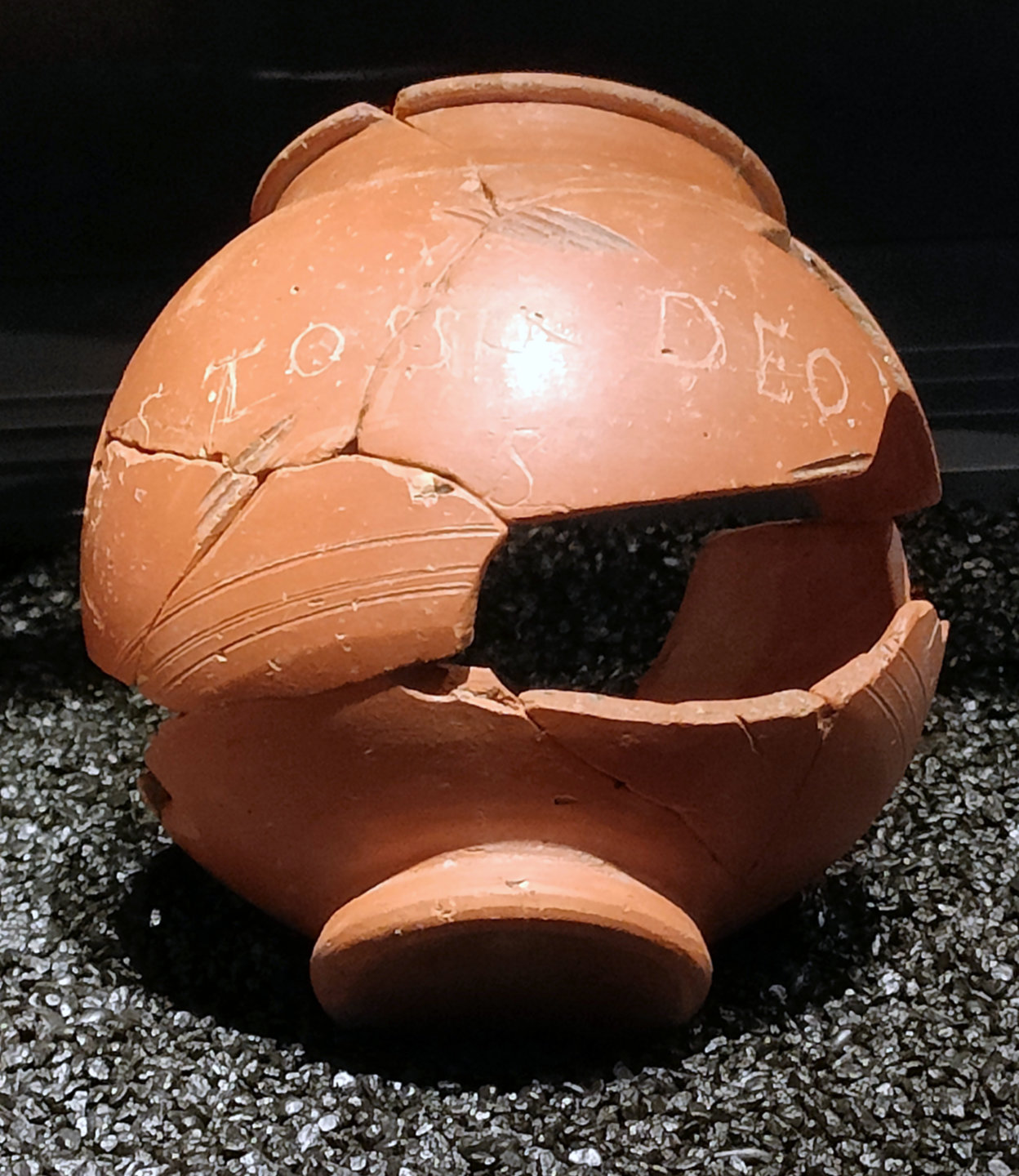
One of the ceramics found at the Mithraeum of Martigny.
The New Mithraeum / Laurent Bricault
In Martigny, more than a hundred graffiti of this kind have been recorded, with the names of Mithras’s followers and sometimes even their professions. Some are barbers, others tailors, and so on. It’s very interesting because many of the people who put their names on these goblets—sometimes to dedicate them to the god—could never have afforded to have a marble inscription. These were people we didn’t know existed because they weren’t included in the monumental epigraphy.
In the past, there wasn’t much interest in liturgy either, or in ritual, gesture or atmosphere. Nor was there much interest in the structure of temples, the functioning of sanctuaries, their decoration or the arrangement of their furnishings. Only a few specialists cared. Occasionally. But that was the end of it.
So let’s talk about ritual. What does archaeology tell us about initiation into the mysteries of Mithras?
I’ve been waiting for that question. The answer is quick and very short: the cult of Mithras is an initiatory cult, not a mystery cult.
It is a mystery cult only in the writings of Christian authors. Scholars such as Nicole Belayche and Francesco Massa have clearly shown that the so-called mysteries of Mithras only exist among Christians who, in their polemic against the god and his cult, wanted to turn it into a mystery cult in order to better condemn it.
The mystery cult par excellence is the one practised at Eleusis, where, through a series of trials, the mystes attained a form of knowledge that seemed to open the gates to the afterlife. Until proven otherwise, there is no such thing in the cult of Mithras, any more than there is in the cult of Isis.
On the other hand, it is a selective cult, and as such can be described as initiatory.
Isn’t initiation itself the revelation of a mystery?
That depends on what you call initiation.
I may be wrong, but I think that what we should call initiation in the cult of Mithras is only the rite of passage that allows you to enter a community. There is only one initiation, no more, and it takes place at the very beginning of the process of integration into the community of syndexi, i.e. ‘those who shake hands’. This is how the adepts refer to themselves in the texts. The word Mithriast did not exist in ancient times. Neither did the word mithraeum.
When you take this step, you become a follower in your own right. That, I think, is what is depicted in the frescoes of Santa Maria Capua Vetere. Nothing else. And I like to think that at the end of these trials, the pater of the community welcomes the new adept by shaking his hand, making him one of the syndexi, just as Mithras and Sol shook hands at the end of the conflict between them.
In any case, from what we’ve seen of the frescoes and some of the reliefs, there are at least two rites, one for the ravens, the other for the lions, and probably another for the fathers.
What the documentation says throughout the Roman world, apart from two or three specific cases in Rome and Ostia, is that there were three grades. Three.
The first grade, that of the raven, is that of the neophyte. The person who wants to enter the community and become a full member, after a period of training which, according to some texts, could last a year. The raven is most likely the person who receives initiation, the rite of passage into the community. Once he has passed, he becomes a lion, the second grade, a full member of the community. But that’s just one initiation.
However, at some point, perhaps under the influence of Neoplatonic philosophy, two or three communities subdivided the three grades into seven. The community of Felicissimus in Ostia, the community of Santa Prisca in Rome. Perhaps also the one mentioned by Saint Jerome in his letter to Laeta, unless it was that of Santa Prisca? But at least two communities, very late in the second half of the third century, increased the number of grades to seven. This enabled them to make them coincide with the seven planets, the seven days of the week, etc.
In a community, it is the lions who form the body of the group. They are the ‘titular’ members of the community. And at the head of the community are one or two patres. The third grade.
You describe the rituals of the cult of Mithras as ‘immersive and sensory, engaging followers through visual, auditory, olfactory, gustatory and tactile experiences’. Tell us more about this.
Again, these are relatively recent advances in research. Many groups of scientists, particularly in France and England, are working on the concept of synaesthesia or polysensitivity. They are showing very convincingly that belonging to a religious group or taking part in a religious ceremony involves what I call the theatralisation of the ritual.
Taking part in a banquet means coming to the end of a collective experience that may begin with a story told by the pater, with the explanation he gives of some episode in the myth. And then, as in most cults, there is a kind of staging, a theatralisation of the rite in relation to the myth. And let me go back for a moment to what we were saying earlier about the concept of mystery.
I think that for a long time there was a confusion between the mysteries in the Greek sense and what were called the sacred mysteries in Egypt. In Egypt there is also the term mysteries, but it refers to what might be called a sacred drama. This is the interpretation, on the occasion of a festival—and only Isis knows how many festivals there were in the calendar!—of scenes relating to divine stories by a number of people, sometimes including the villagers, who were transformed from spectators to actors in the ritual.
If you look at the Mundelsheim reliefs, you’ll see that they are openwork. Above the representation of the sun, the rays of its crown are hollowed out to allow the light from a lamp placed behind it on a small shelf provided for this purpose. The same applies to the crescent moon, which was probably placed on the other side of a tauroctony, or on either side of the central aisle of the speleum.
Another even more remarkable example. Güglingen. Excavations from 1999-2002. In two small, hidden cavities in the heart of the speleum, a lifting mechanism was set up so that Mithras petrogenus could be seen in one place and, no doubt, Mithras’s Phrygian bonnet in another.
So I think there was a whole stage set up to impress the audience. Of course, this was not exclusive to the cult of Mithras. However, in the cult of Mithras, these stage plays were not performed in the open air, outside, in front of a crowd, but in the semi-darkness of a closed, rather cramped building, reserved only for the followers. In several caves we discovered a kind of small stage, a podium on which people could stand and perform a show.
I am convinced that the play of light, smells and sounds created the conditions for a real ritual immersion. You took part in a kind of collective event that put you in a special state and ended in the warmth and enthusiasm of the famous banquet.
The costumes are the same. I don’t have an answer to that question, but when you join a group that wants to develop a very strong identity, it makes sense. I don’t believe in masks, despite the fantasies that have circulated since ancient times.
The antechambers could have been used for that too, don’t you think?
The antechambers and vestibules could also have been used as cloakrooms. In fact, I wonder to what extent the lions didn’t wear a common garment, perhaps white, and the pater a coloured one, maybe red, as in the Mitreo di Santa Maria Capua Vetere. Clothing must also have helped to assert the identity of the group, to erase the social differences between the members of the community.
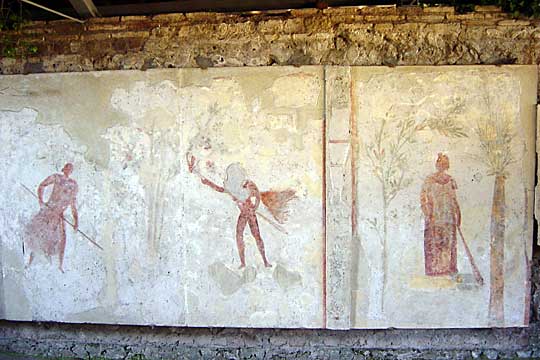
Mitreo delle pareti dipinte, right wall, left side : Nymphus, Miles and Heliodromus
The New Mithraeum / Andreu Abuín (CC BY-SA)
But in the frescoes of the mitreo delle pareti dipinte, in Ostia, we thought we saw mystes disguised, one as a soldier, another as a woman, a third as a heliodrome.
Why not find a soldier, a woman or a heliodrome on these walls? It’s the word ‘disguised’ that doesn’t work. After discussing this with specialists in Roman painting, they all tell me that such images follow iconographic conventions. They are not there to reproduce reality.
They are visual representations of grade. A soldier’s uniform denotes a soldier, a crown of rays denotes a heliodrome, a Phrygian cap denotes a pater, and so on.
This can also be seen in the frescoes at Dura Europos, where the raven is depicted with a raven’s head, neck and even legs. Look, everyone, it’s a raven! There’s no need to imagine someone with a mask and crow’s feet...
In the relief of Konjic, we have both: a lion and someone dressed as a lion.
No, really, I don’t think so. Again, it’s a perverse effect of the Christian-centred reading of past centuries. A time when Christian authors were trusted to tell you that Mithraic adepts wore masks, cawed like crows and roared like lions. No. Some of these authors may have seen pictures of guys with lion heads, but they’re just leones. In my opinion, they are not people wearing lion masks.
On the Konjic relief, Mithras, Sol, Cautes and Cautopates are accompanied by a Corax and a Leo. Very simple.
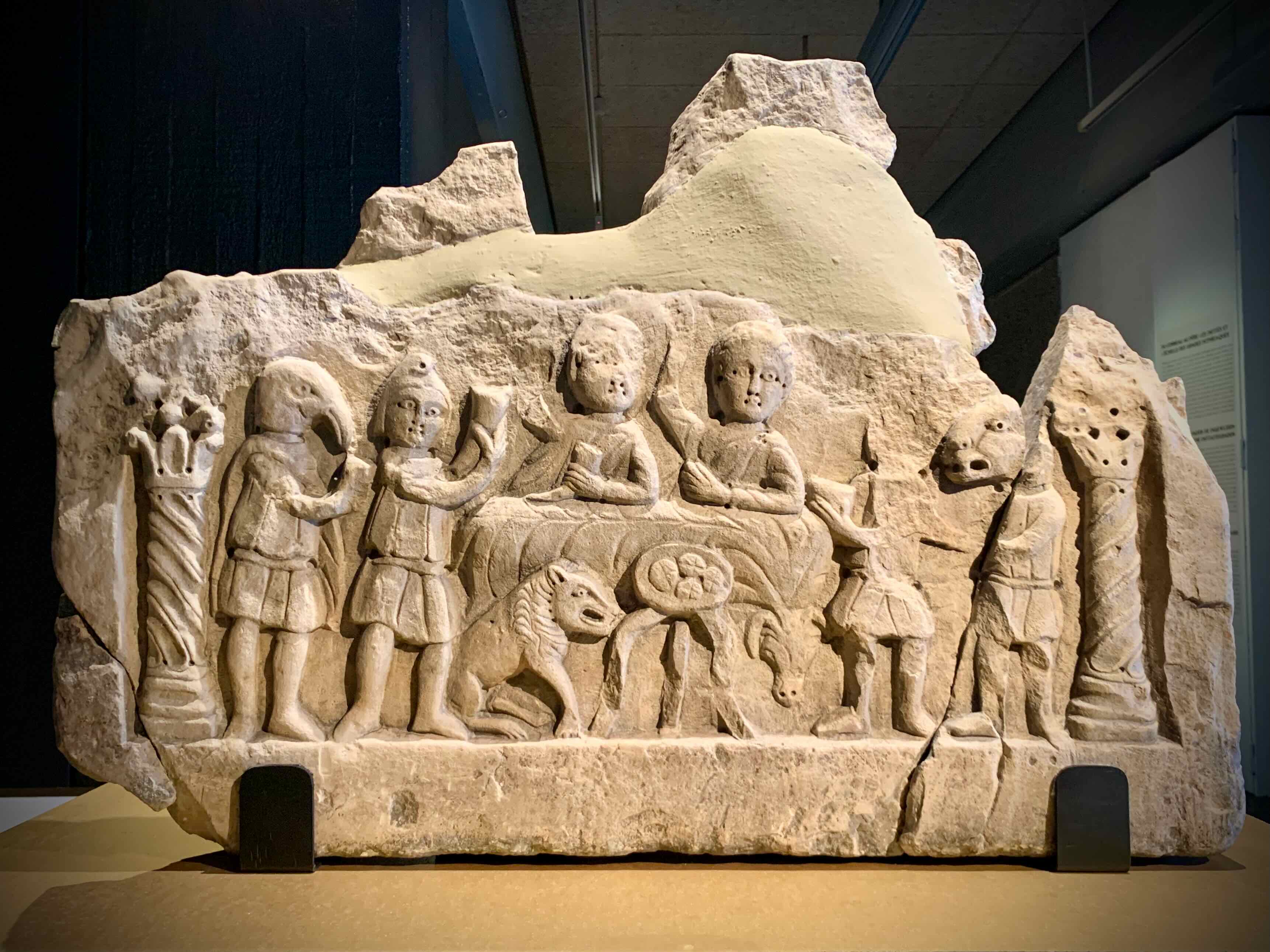
Sacred meal with Mithras, Sol, Cautes, Cautopates, a corax and a leo from Konjic.
The New Mithraeum / Olivier-Antoine Reÿnès (CC BY-SA)
Disguised or not, you have argued that the cult of Mithras is eminently modern. In what way is this so?
The private cult of Mithras, with its closed communal nature, differs in many ways from the traditional polytheistic, civic and public cults of the Greek and Roman world.
For example, during the Panathenaic festival in Athens, a civic and social religious festival, participation in the great procession was the prerogative of a few large families. The rest of the population—except for slaves, who were not even allowed to attend—was much more passive. These ceremonies were certainly a little like your own, but above all they were those of the city. What was at stake, its aims and the way they unfolded did not necessarily concern you personally or individually.
It’s very different with a cult like Mithras. When you join such a community, you establish a privileged relationship with the deity. It’s a kind of individualisation of the cult and the relationship with the gods.
I think that’s why Mithras was such a problem for Christians. It annoyed them a lot. It even irritated them. That’s why they polemicised so much against Mithras from the middle of the second century AD. Because the cult of Mithras emphasised a privileged relationship between the worshipper and the divine power.
In that sense, we are dealing with something that is a little closer to what we know in our contemporary society.
Wasn’t the community more important than the god himself? To what extent did they believe in Mithtras?
John Scheid, in his book Quand faire, c’est croire, has given a very clear, and for the most part correct, answer. I think it’s a mistake to use the word ‘believe’ or ‘belief’ in relation to ancient polytheism, because we inevitably put behind these words Judeo-Christian notions and realities such as ‘faith’, which are not relevant to traditional cults.
The ancients didn’t have to believe in their gods because their gods were there, very present. In the polytheistic world, gods and humans are part of the same world. The gods are necessarily there, just as you are there in front of me. You don’t have to ‘believe’ in them.
I agree, but the gods are there until you start to doubt them. And we’re at the stage in Western history where we start to think that maybe all these gods are just stories that we tell ourselves, and that these powers are really just one god (or three) born in Judea.
That’s what the Christians will tell them: the divine powers that you think you share the world with don’t exist. They are idols. They are false gods. Creations of the devil. At best, great men whose memory you have magnified. You are mistaken. There is only one God, and he’s ours. The only true one. The one of the book.
It will be some time before this is universally accepted. But there are masses of people who will not accept this view of things, even after a long, long time. The Christianisation of the countryside will be very difficult. After all, isn’t the word pagan derived from paganus, the peasant? It would take so long that the Christians would be forced to create the cult of the saints to replace and supplant these divine powers that supposedly didn’t exist. With varying success.
What can Mithras teach us about our need for brotherhood and mutual aid, about our elective affinities, about living together, and about our fear of the unknown and chaos?
When we study the cult of Mithras, we are dealing with communities that are probably very tight knit. People are very close to each other. Very often they come from the same professional background, but not only that.
They take the notion of equality in ancient Rome to the extreme, through their participation in these communities, through their ability to help each other, through their sociability, through the fact that they get together.
Lucinda Dirven recently told me that on the graffiti at the Mithraeum of Dura Europos they were all called by their simple names. Some are Roman citizens, sometimes important members of the legion, but from the moment they enter the mithraeum they become Marcus, Tiberius or Julius, and everyone visibly forgets their social status. The wardrobe also serves to shed one’s outer identity. At least in theory.
And what about our fears of the unknown and of chaos?
Again, a big question to which I have no definite answer. What attracted them, apart from the fact that they were part of a close-knit group? What made them want to gather around the altar of Mithras and not some other god?
It’s very difficult to put yourself in their shoes. It doesn’t make much sense, but let’s try anyway. Once I’ve become a lion, I’ll listen to the pater who will explain to me—if we’ve interpreted these silent scenes from Mithras’s sanctuaries correctly—that it was Mithras who brought the earth back to life. That it was also Mithras who brought order to the universe, who restored balance to the world and allowed us to escape from chaos.
So I say to myself that I’m not only going to find a group of people with whom I can have a good time, but that I’m going to have some great experiences with them, some camaraderie, that I’m going to share some banquets. At the same time, I’m thinking that Mithras is the one who brings life back to the earth, who restores order to the cosmos.
Mithras and my friends in the community are reassuring in a way...
But you know that when you join the community, not before. That’s one of the reasons why you can get the impression that it’s a cult imposed by an elite who, at some point, saw the point of rallying the troops. They needed a tool to bring together disparate people from the four corners of the empire. The case of Merida is quite striking.
I don’t know. I confess I am reluctant to share this theory. I know the opinion of my comrade Jaime Alvar, but I must say that I’m not really convinced by this view of things. The Imperial cult already exists to materialise and glorify the people’s allegiance to the Empire. Why create another cult?
If you look at the communities, you see that they are very different. There is no uniformity. There were communities of soldiers, of course, and even of officers, but there were also communities of slaves, workers in the pig market in Rome, tax officials and many others. It was only in the fourth century that the senators began to take an interest in them. All these communities were highly autonomous. And always within a private framework.
How can we explain the rapid spread of a god little known in the Mediterranean, over such a vast territory, without any supporting power? Why else would this garlic seller from near Tarragona, a certain Lucius Petreius Victor, spend his little money to erect a small marble altar in Cautes?
There’s the whole question of the spread of the cult, by capillary action or something else. It’s a huge problem. I don’t know the life of the garlic merchant. Nobody does. We don’t know the circumstances under which he joined a Mithraic community in Tarraconensis. Through connections, no doubt. But what connections? We don’t know.
Richard Gordon is right when he states that it is undoubtedly the responsibility of those who succeed in attracting groups of people around them. For this scholar, and I agree with him, the spread of a cult such as Mithras is linked to the charisma of a few individuals. These are the mystagogues or patres whose personality is such that they will be able to gather people around them who will give birth to a community.
It doesn’t matter if your garlic seller or the guy who slices the pork in the market in Rome knows Mithras, as long as they meet a person of that stature who tells them: ‘There is this god. He does this, he does that. He can respond to this or that concern. He can protect the universe. He can help us escape from chaos. He can even protect you in your travels, in your business, in your life. His name is Mithras.’ So, recruitment is certainly by co-option.
I think that’s how communities are created. There must be a central, attractive figure at the beginning. Someone with charisma. Someone who can inspire others. The person to whom all eyes turn when he arrives at a party.
We’re coming to the end of this interview and I’d like to take this opportunity to thank you and congratulate you for initiating and making possible the MITHRA project, which I know has been a huge success. Could you give our readers a brief overview?
It has indeed been a wonderful adventure. The exhibition, held in Mariemont, Toulouse and Frankfurt, attracted over 100,000 visitors. We printed 2,500 catalogues in French and English. They were all sold out and we’re thinking of producing a new version for an even wider audience. Our university publications, which may seem more austere—but they are not!—have been a great success too and continue to spread. The same goes for the illustrated book La légende de Mithra, aimed at young people, which I designed with the help of Céline Piret, a very talented Belgian cartoonist.
The critical and public response has far exceeded our initial expectations, and we’re delighted. Many people have discovered Mithras. Young and old alike. Many students from all over Europe now want to work on Mithras. Others have been able to see for themselves how research works.
Several international projects are being set up to build on this tremendous momentum. There will be more conferences, colloquia and study days in the coming years. We are only at the beginning of a major renewal of everything we know about Mithras. That’s why the MITHRA project is a project for the future.
Many people have also understood why the opinions of the past have sometimes become preconceptions, clichés.
It is not possible to write today about Mithras what was written 50 years ago. We can be sure that in fifty years we won’t be writing what I’m telling you today.
You can find the main publications of Laurent Bricault on the cult of Mithras on his page on The New Mithraeum.

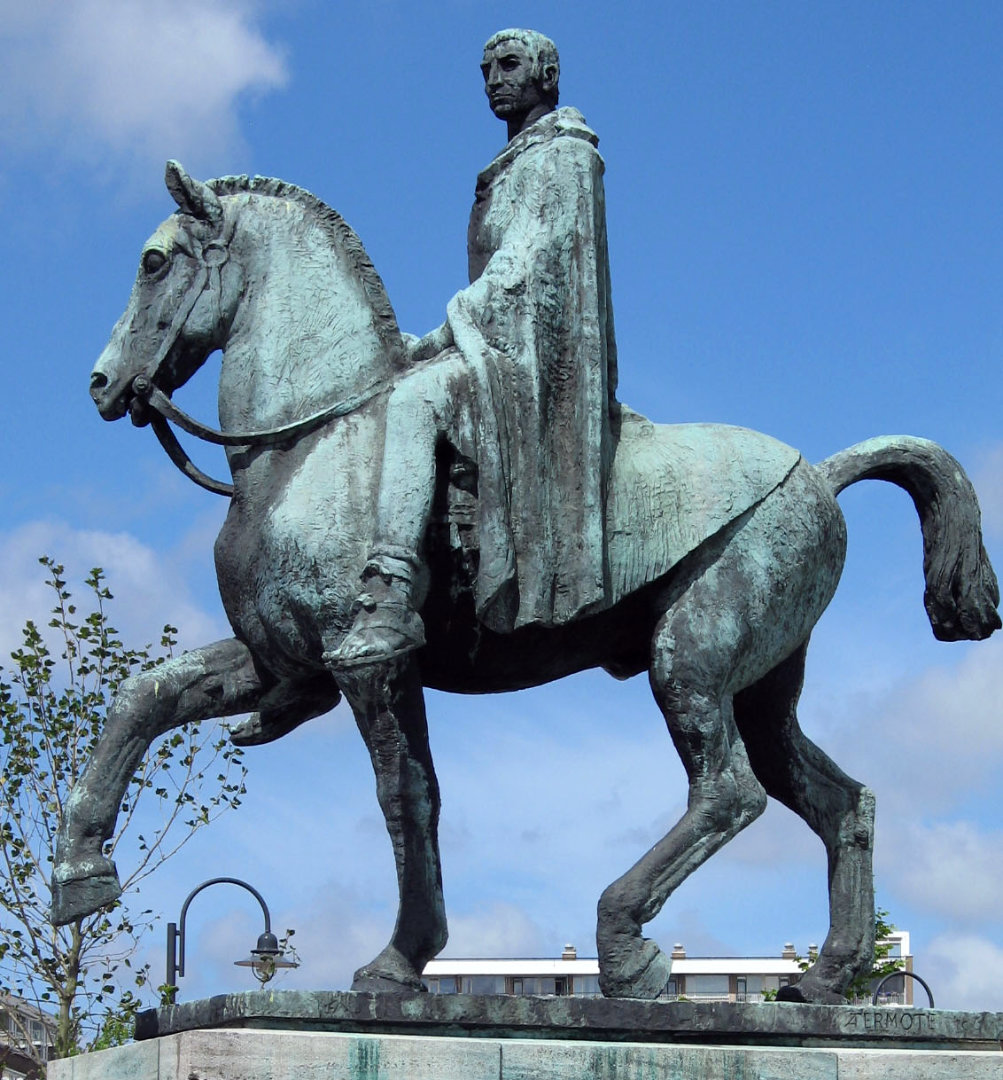
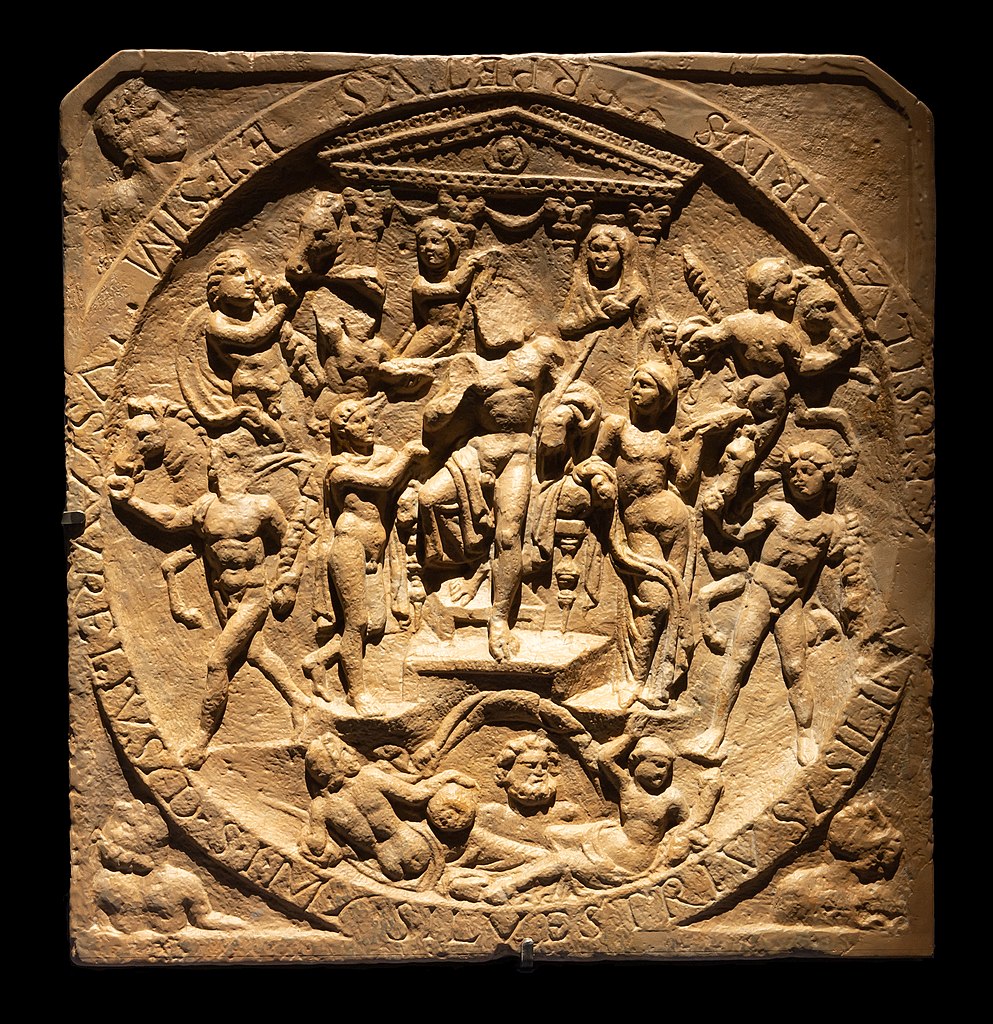
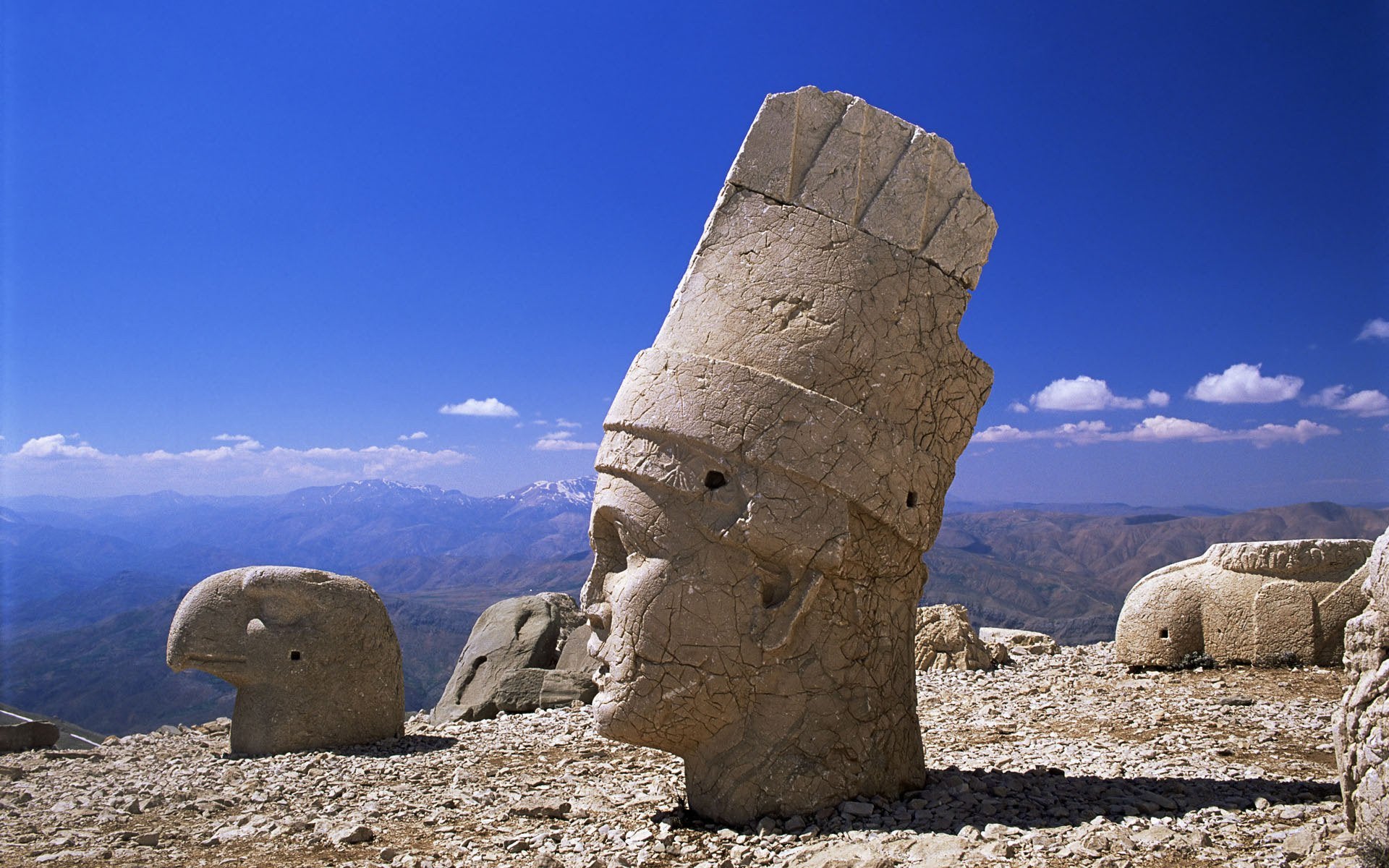
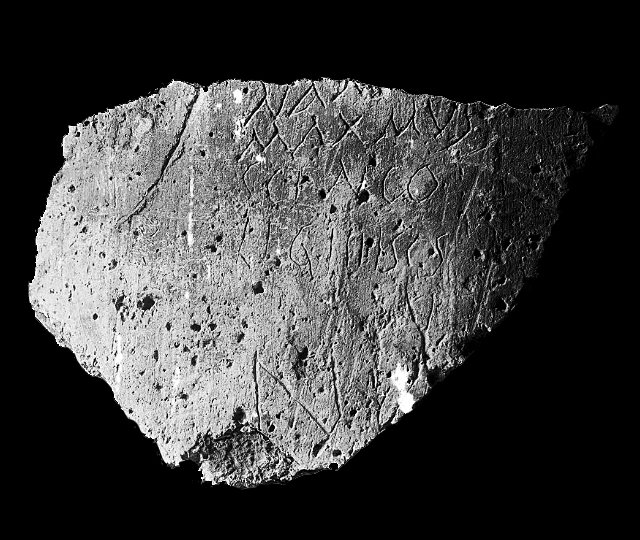
Comments
Interessante e gostei muito deste artigo.
Penso que o culto de Mitra carece de mais documentação arqueológica escrita, que não existe.
Há um ponto de vista que não de trata de religião ou objetivos religiosos e sim sociais, quais a Maçonaria nos tempos contemporâneos. Creio que o objetivo era o homem dentro da comunidade a que estava inserido.
Having just visited Frankfurt, and feeling like I missed the exhibition "by this much," I was quite frustrated that I was unable to purchase an exhibition catalogue in English. Let me gently encourage you to make that available. My PhD is in Jungian Studies, and I think a few academic Jungian sorts would likewise be interested.
PS: I worked with Thomas Gaehtgens in the Visiting Scholars program at the Getty Research Institute.
I am a devotee of Mithras Thank you for this interview. I think the author is right when he highlights that Roman Mithras is very different to Persian Mitra. Mithras is born mighty from birth and with a connection to His Father. The rock is a symbol of prowess and His Father is Sol. The main rite was centered on celebration of Mithras,’ victory over the bull, the bull which in Rome was similar to a dragon or an animal which normal people cant slay.
Add a comment